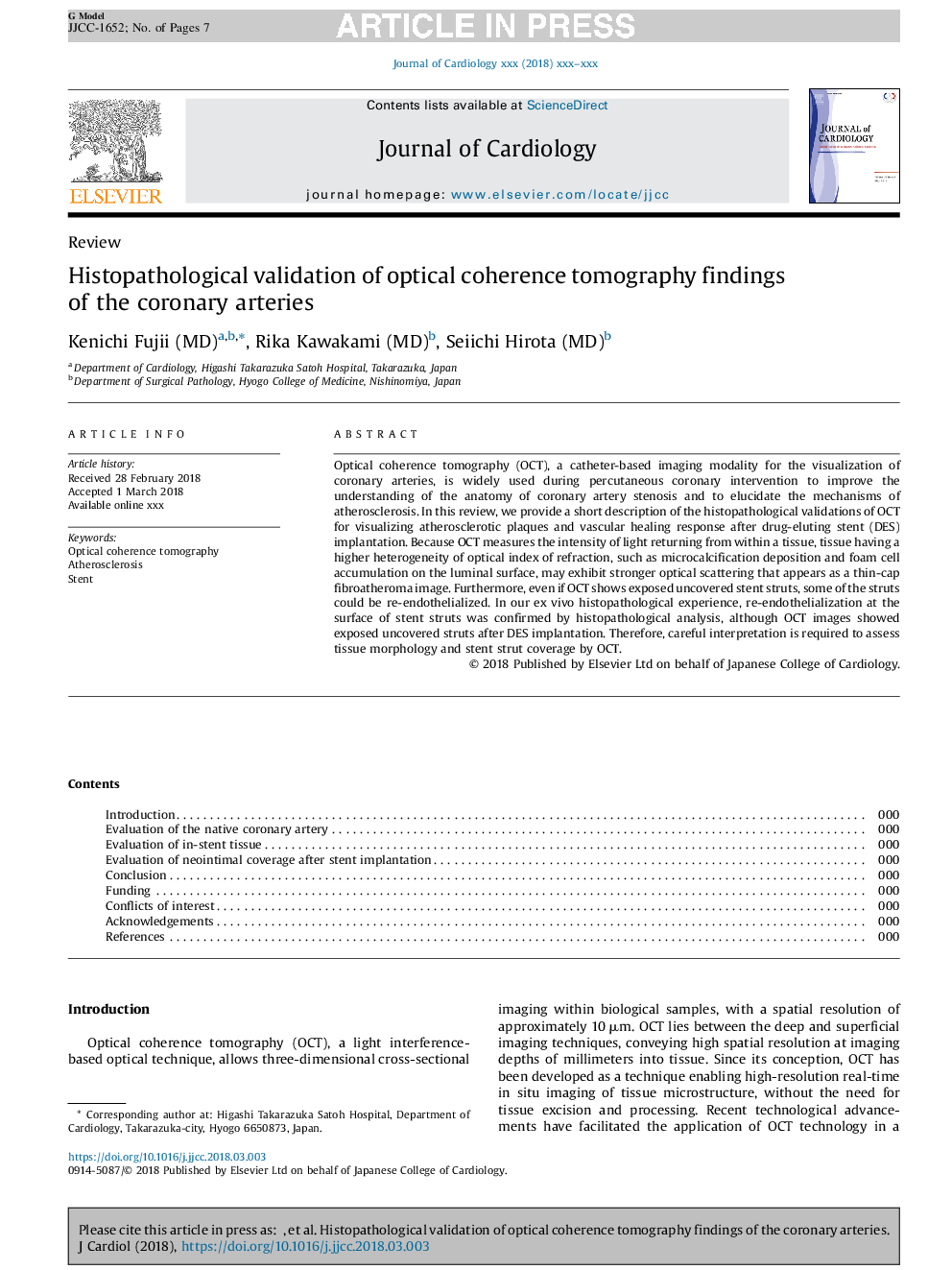| Article ID | Journal | Published Year | Pages | File Type |
|---|---|---|---|---|
| 8667793 | Journal of Cardiology | 2018 | 7 Pages |
Abstract
Optical coherence tomography (OCT), a catheter-based imaging modality for the visualization of coronary arteries, is widely used during percutaneous coronary intervention to improve the understanding of the anatomy of coronary artery stenosis and to elucidate the mechanisms of atherosclerosis. In this review, we provide a short description of the histopathological validations of OCT for visualizing atherosclerotic plaques and vascular healing response after drug-eluting stent (DES) implantation. Because OCT measures the intensity of light returning from within a tissue, tissue having a higher heterogeneity of optical index of refraction, such as microcalcification deposition and foam cell accumulation on the luminal surface, may exhibit stronger optical scattering that appears as a thin-cap fibroatheroma image. Furthermore, even if OCT shows exposed uncovered stent struts, some of the struts could be re-endothelialized. In our ex vivo histopathological experience, re-endothelialization at the surface of stent struts was confirmed by histopathological analysis, although OCT images showed exposed uncovered struts after DES implantation. Therefore, careful interpretation is required to assess tissue morphology and stent strut coverage by OCT.
Related Topics
Health Sciences
Medicine and Dentistry
Cardiology and Cardiovascular Medicine
Authors
Kenichi MD, Rika MD, Seiichi MD,
